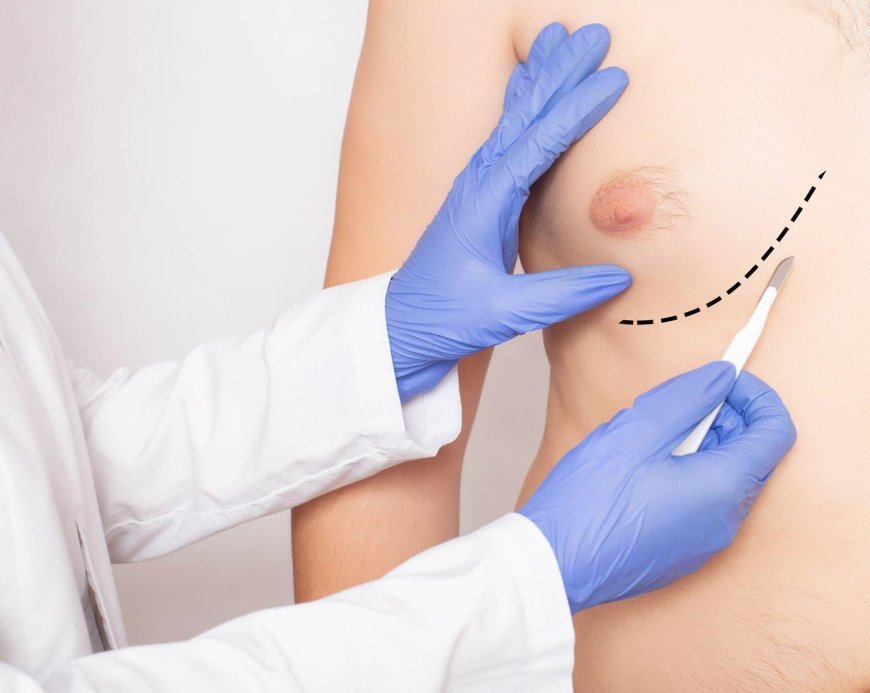Hormonal Imbalance and Gynecomastia – What Are the Links?

Gynecomastia, or the enlargement of male breast tissue, is a common condition that can significantly impact a man's confidence and physical appearance. While factors like age, medications, and lifestyle play a role, the most prominent underlying cause is hormonal imbalance—particularly disruptions in the ratio between estrogen and testosterone. In many cases, medical and cosmetic experts recommend Gynecomastia Surgery in Islamabad as a definitive solution when hormonal treatments or lifestyle changes fail to reverse the condition.
In this blog, we will explore how hormones influence gynecomastia, the symptoms to watch for, and when surgery becomes the most appropriate choice for long-term resolution.
What Is Gynecomastia?
Gynecomastia is defined as the benign enlargement of male breast glandular tissue, which differs from pseudogynecomastia—a condition where fat, not glandular tissue, accumulates in the chest area. True gynecomastia is often due to hormonal changes that increase estrogen levels or decrease testosterone, leading to an imbalance.
This imbalance causes the breast glands to enlarge, resulting in a more feminine-looking chest. The condition can affect one or both breasts and can occur in newborns, teenagers during puberty, and older men.
Hormonal Imbalance: The Core of the Issue
Hormones act as chemical messengers in the body, regulating various functions, including growth, mood, metabolism, and reproduction. In males, testosterone is the dominant hormone, while estrogen exists in much smaller quantities.
When the ratio between these hormones is disrupted, even slightly, it can lead to breast tissue development. Some key hormonal triggers include:
1. Puberty-Related Hormonal Shifts
Teenagers going through puberty often experience hormonal fluctuations. During this time, it's not uncommon for boys to develop temporary gynecomastia due to increased estrogen activity. This typically resolves within a year or two without intervention.
2. Andropause in Older Men
As men age, testosterone levels naturally decline, and the balance between testosterone and estrogen shifts. This is known as andropause, and it's one of the leading causes of gynecomastia in older adults.
3. Medical Conditions Affecting Hormones
Several medical conditions can cause hormone disruptions, including:
-
Hypogonadism: Reduced testosterone production by the testes
-
Hyperthyroidism: Excess thyroid hormone affecting estrogen/testosterone ratios
-
Tumors: Some tumors of the adrenal glands, pituitary gland, or testes can influence hormone production
-
Liver or kidney failure: These can interfere with the body’s ability to metabolize hormones, leading to estrogen accumulation
Medications That Impact Hormones
Certain medications can interfere with normal hormone production and contribute to gynecomastia, such as:
-
Anti-androgens (used for prostate cancer or enlarged prostate)
-
Anabolic steroids and androgens
-
AIDS medications (especially efavirenz)
-
Anti-anxiety drugs like diazepam
-
Tricyclic antidepressants
-
Chemotherapy agents
Always discuss any long-term medications with your healthcare provider if you notice changes in breast tissue.
Other Lifestyle Factors Contributing to Hormonal Imbalance
While medical and age-related factors play a central role, several lifestyle choices can also impact hormonal balance:
-
Obesity: Excess fat increases estrogen production and decreases testosterone
-
Alcohol: Heavy consumption can affect liver function and hormone levels
-
Drugs: Marijuana, heroin, and amphetamines have been linked to gynecomastia
-
Diet: Poor nutrition can reduce testosterone and promote hormonal disruptions
Addressing these lifestyle choices is essential, especially if gynecomastia is in its early stages.
How to Diagnose Hormonal Imbalance-Related Gynecomastia
If you suspect you have gynecomastia, it’s important to undergo a proper diagnosis. A doctor will typically:
-
Conduct a physical examination
-
Review your medical and medication history
-
Order blood tests to assess hormone levels
-
Perform imaging tests (ultrasound or mammogram) to determine glandular vs. fatty tissue
In hormone-related cases, additional endocrine evaluations may be needed.
Can Hormonal Imbalance Be Treated Without Surgery?
In early stages or in adolescent boys, hormonal imbalance may be addressed through:
-
Observation: In teenagers, it often resolves on its own.
-
Hormone therapy: Such as using testosterone or anti-estrogen medications under a doctor’s guidance.
-
Lifestyle modifications: Losing weight, improving diet, and managing stress can naturally balance hormones.
However, once the breast tissue becomes fibrous or persists beyond two years, surgery may be the only viable solution.
When Is Surgery Recommended?
Gynecomastia surgery, also known as male breast reduction, is advised in the following scenarios:
-
Glandular tissue is dominant and doesn’t respond to non-surgical treatment
-
The condition has lasted for more than 12–24 months
-
There is emotional or social distress due to the appearance of the chest
-
The patient desires a permanent solution and chest contouring
In these cases, surgery involves the removal of glandular breast tissue and possibly excess fat through excision and/or liposuction. The result is a flatter, firmer, and more masculine chest.
What to Expect From Surgery
Gynecomastia surgery is typically performed under local anesthesia with sedation or general anesthesia. It is a day-care procedure with relatively quick recovery.
Benefits of surgery include:
-
Permanent resolution of the condition
-
Minimal and discreet scarring
-
High patient satisfaction
-
Restoration of self-esteem and body confidence
Most men return to light activities within a few days and resume normal exercise routines in 3–4 weeks.
Emotional and Psychological Relief
Aside from physical improvement, resolving gynecomastia can also lead to:
-
Better self-image
-
Confidence in social and intimate settings
-
Reduced anxiety and depression associated with body image issues
Men who undergo surgery often report a significant boost in emotional well-being.
Final Thoughts
Gynecomastia linked to hormonal imbalance is a medically recognized and treatable condition. While some cases resolve on their own or respond to lifestyle changes, persistent gynecomastia—especially due to glandular growth—requires medical or surgical intervention.
For individuals in Pakistan’s capital, opting for Gynecomastia Surgery in Islamabad can provide lasting relief and restore a natural, masculine chest contour. The key is timely diagnosis and expert guidance.
Consult the Experts at Dynamic Clinic
If you or a loved one is struggling with gynecomastia, expert advice is just a consultation away. The Dynamic Clinic in Islamabad offers comprehensive diagnostic evaluations and advanced surgical treatments tailored to each individual’s needs. Their skilled team is committed to helping patients regain both their appearance and confidence through safe, effective procedures.
What's Your Reaction?

































































